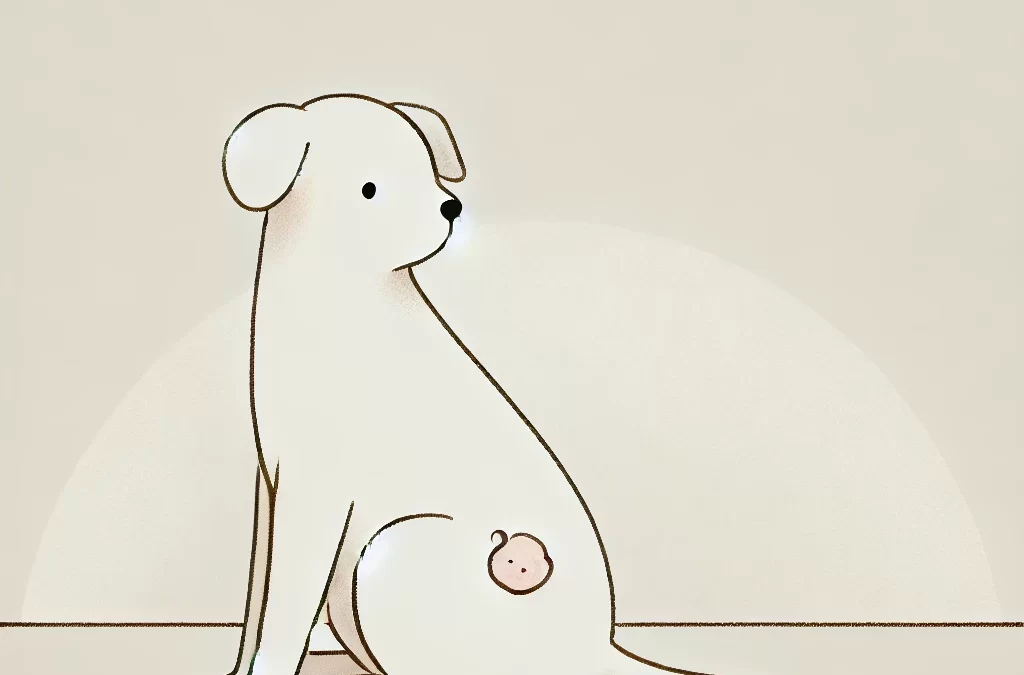Finding a lump or bump on your dog can be an alarming experience, but not all growths are dangerous. Cysts, for instance, are relatively common in dogs and are often benign. However, the question arises: will a dog cyst go away on its own? Let’s break down this issue, exploring the types, causes, and natural approaches to managing cysts, as well as when professional intervention is necessary.
What Exactly Is a Cyst?
A cyst is a closed sac filled with fluid, semi-solid material, or air. They often form beneath the skin and can vary in size. Cysts in dogs are typically caused by blocked hair follicles, trauma, or infections. While most are harmless, understanding their nature is key to ensuring your dog’s health.
Types of Cysts in Dogs
- Kystes sébacés: Result from blocked oil glands and are the most common type. These often appear as small, slow-growing lumps and can rupture over time.
- Kystes folliculaires: Linked to hair follicle blockages, often due to irritation or genetics.
- True Cysts: Encased in an epithelial lining, these are rare but distinct.
- Abcès: Though not technically cysts, they are infected lumps filled with pus and often mistaken for cysts.
Will It Resolve on Its Own?
The answer depends on the type of cyst and the underlying cause:
- Kystes sébacés: These may rupture and drain on their own, but they often refill unless the sac is completely removed.
- Kystes folliculaires: These rarely disappear without intervention and may grow over time.
- Infected Cysts or Abscesses: Require immediate treatment to prevent complications. They won’t heal on their own.
While some cysts may reduce in size temporarily, complete self-resolution is uncommon.
Natural Approaches to Manage Cysts
If the cyst is small, non-painful, and your veterinarian has confirmed it’s benign, natural management can be considered. These remedies aim to reduce inflammation, prevent infection, and promote skin health:
1. Warm Compress
A warm compress can encourage blood flow to the area, helping the cyst drain naturally. Use a clean cloth soaked in warm water and gently apply it for 5–10 minutes, twice daily.
2. Turmeric Paste
Turmeric’s anti-inflammatory and antimicrobial properties make it a favorite in holistic pet care. Mix turmeric powder with coconut oil to form a paste and apply it to the cyst (with vet approval).
3. Castor Oil
Rich in ricinoleic acid, castor oil can help reduce inflammation. Dab a small amount onto the cyst with a cotton swab.
4. Dietary Adjustments
Boosting your dog’s diet with omega-3 fatty acids (fish oil) and antioxidants can improve overall skin health. Ensure their diet is rich in vitamins E and C to support tissue repair.
5. Herbal Remedies
Calendula and chamomile compresses have soothing effects and may promote healing.
Quand consulter un vétérinaire
While natural remedies can be effective for managing small, benign cysts, some situations require professional attention:
- Rapid Growth: If the cyst increases in size quickly, it could indicate an underlying issue.
- Douleur ou inconfort: If your dog shows signs of pain, avoids being touched, or licks the area obsessively.
- Infection: Redness, swelling, warmth, or oozing pus are signs of an infected cyst.
- Plusieurs grumeaux: Could indicate a systemic issue or a different condition.
- Problèmes d'emplacement: Cysts near joints or vital organs should be examined promptly.
A Balanced Approach: Combining Nature and Science
A dog cyst, while often harmless, requires careful observation. Combining natural remedies with veterinary guidance ensures your dog’s comfort and safety. Remember, cysts rarely disappear entirely on their own, so proactive care is essential.
The takeaway? Don’t panic if you discover a cyst on your dog. Instead, monitor its size and behavior, use natural therapies when appropriate, and consult your vet to rule out more serious conditions. By taking a balanced and informed approach, you can keep your furry friend healthy, happy, and thriving.


